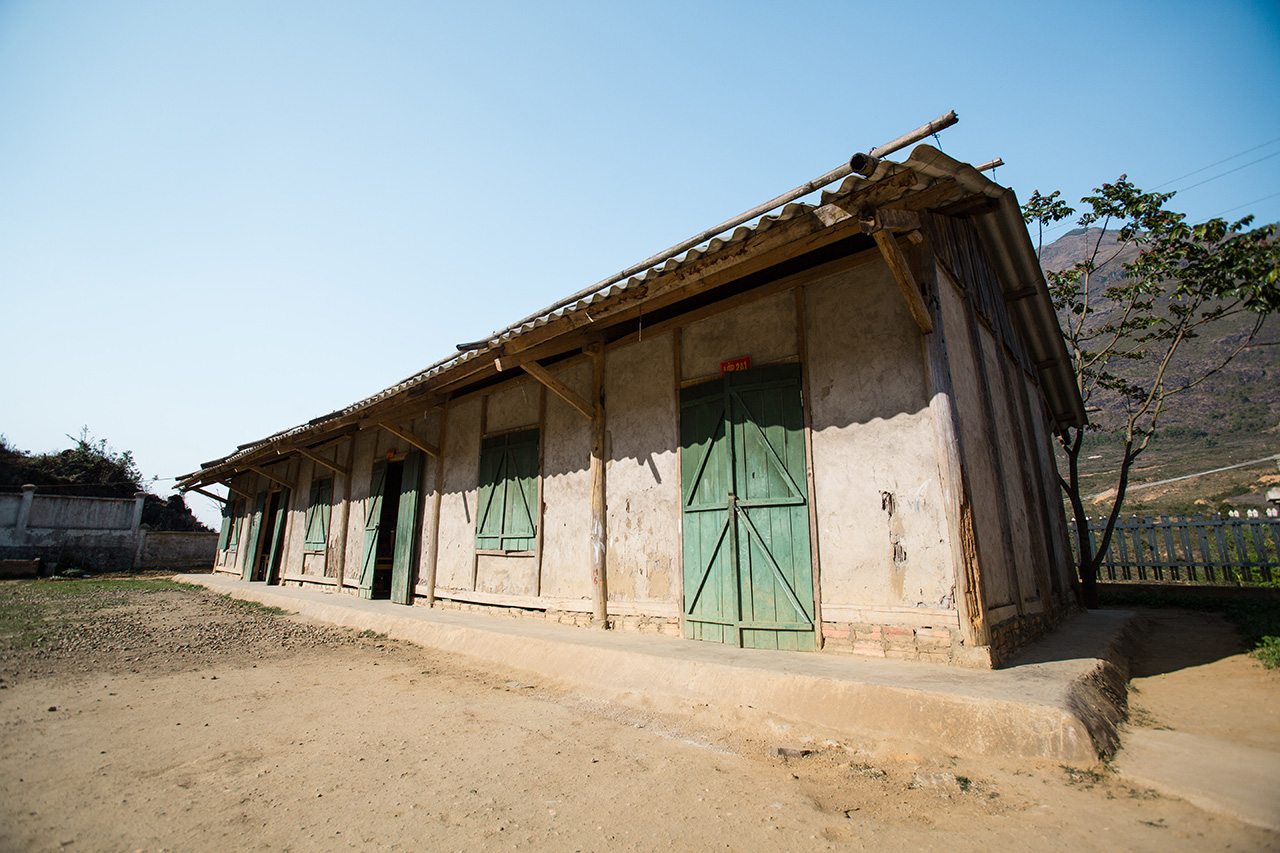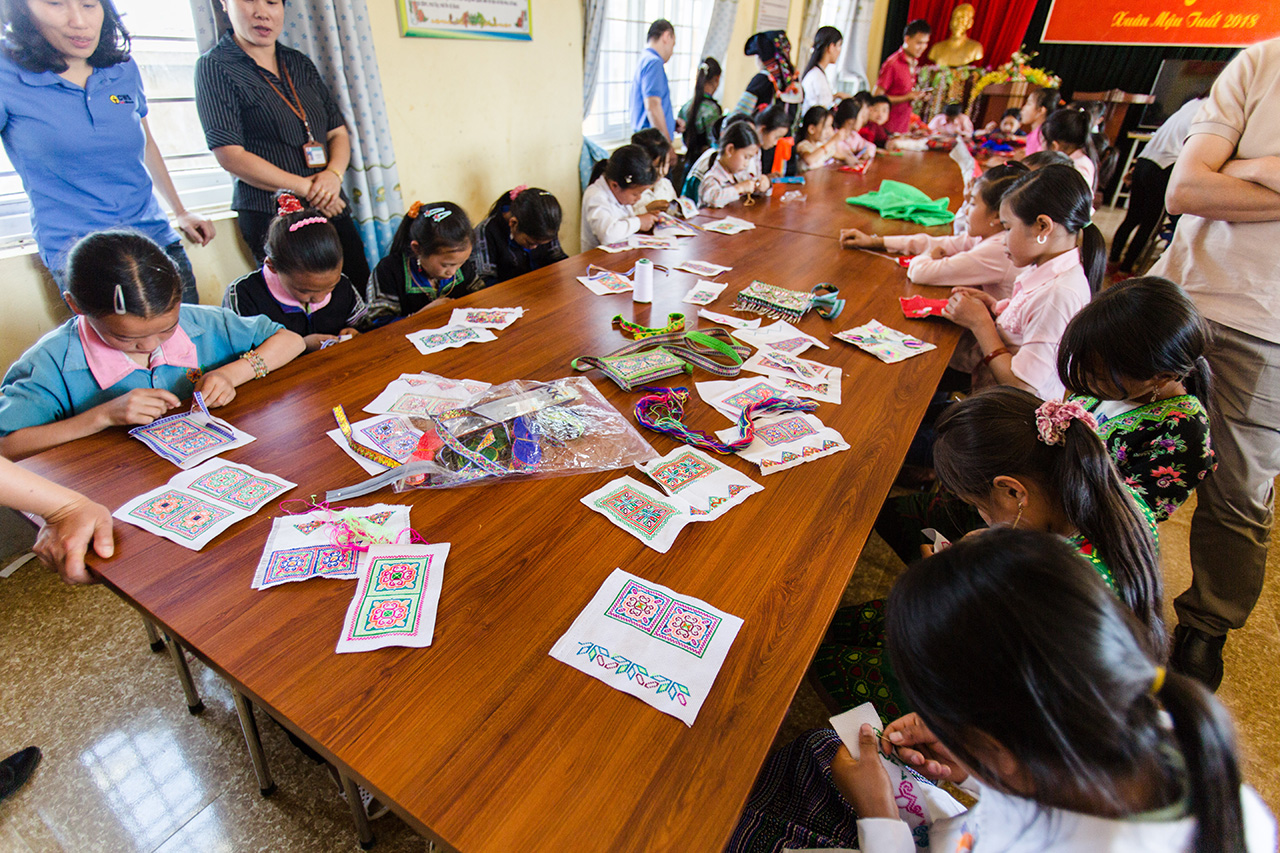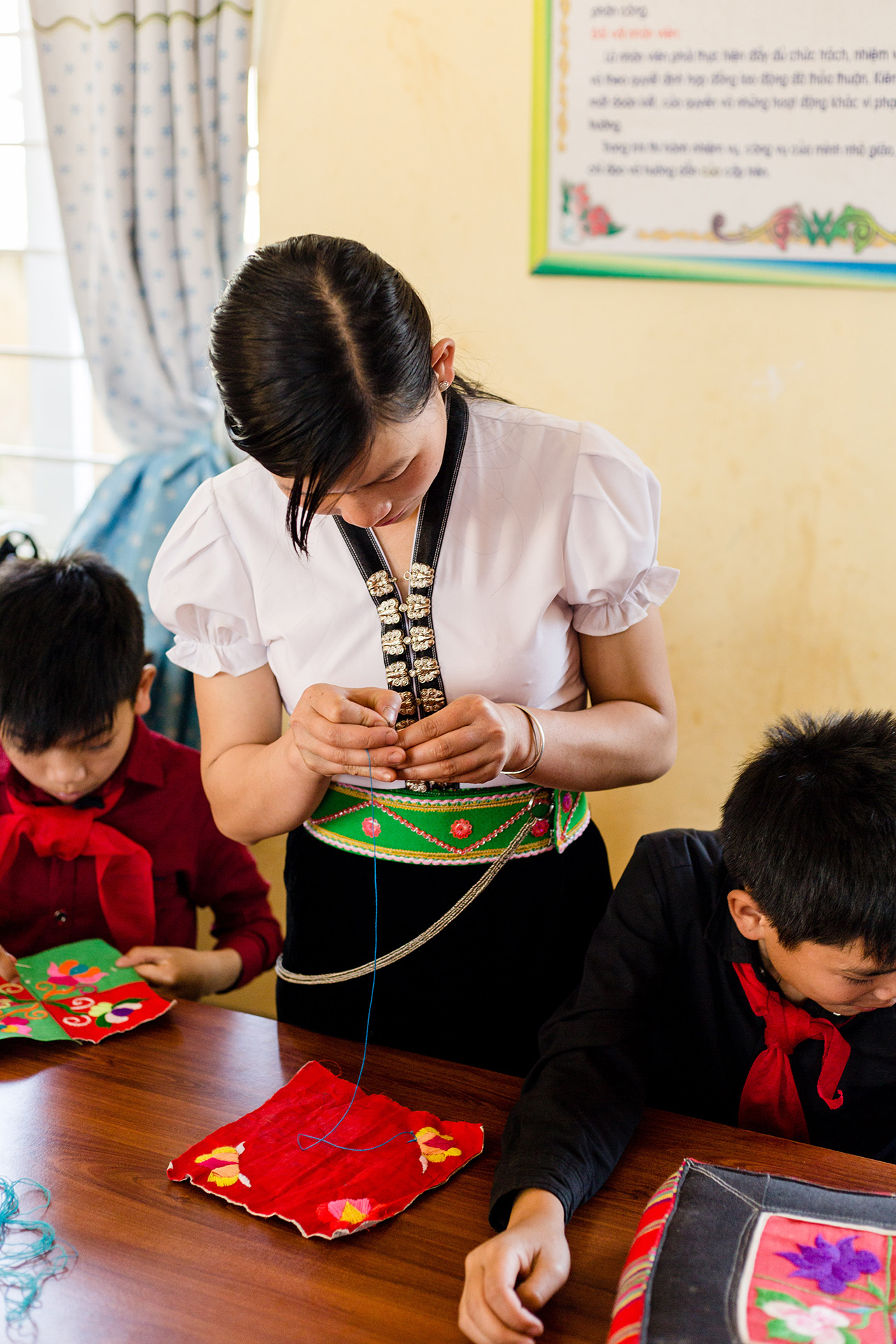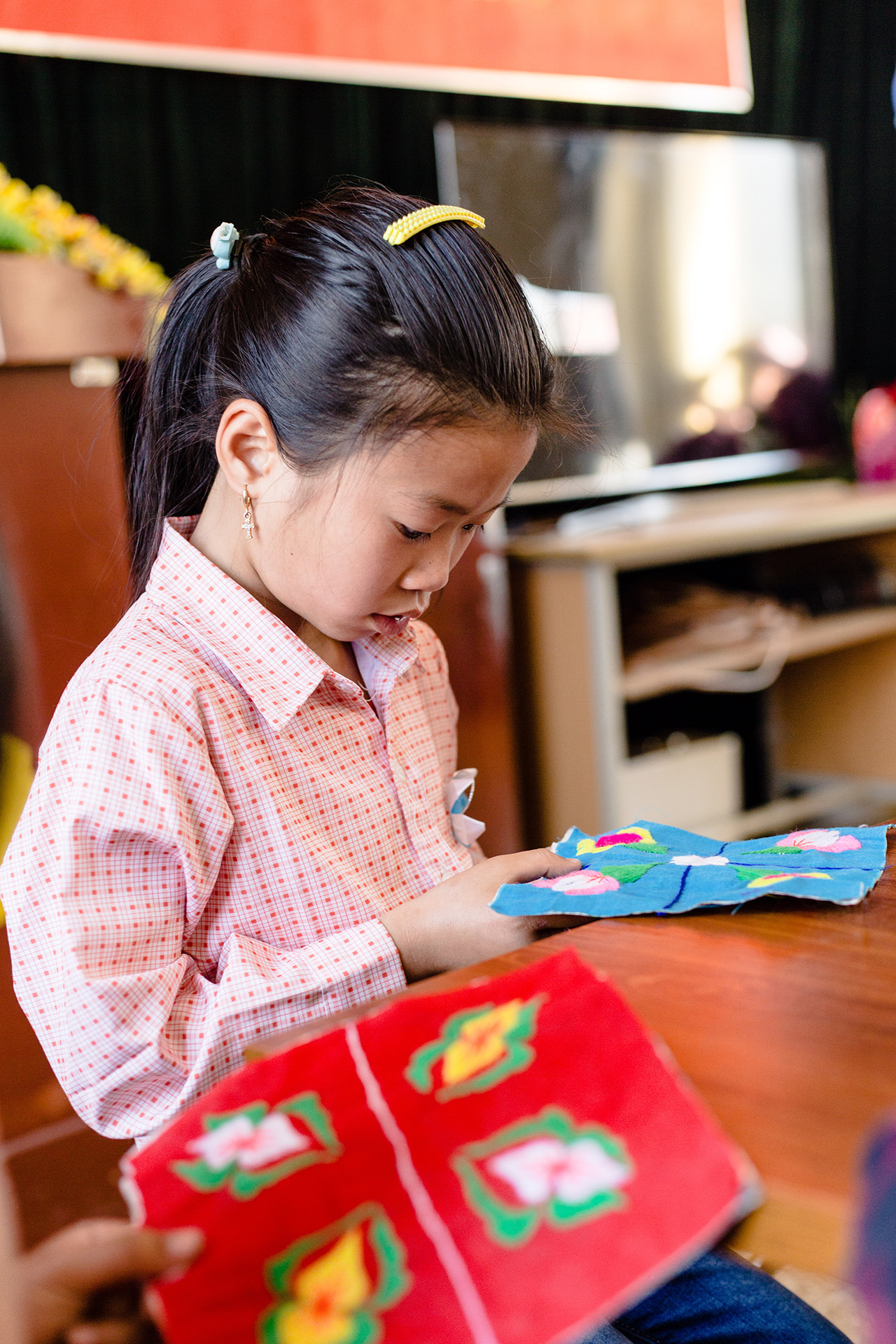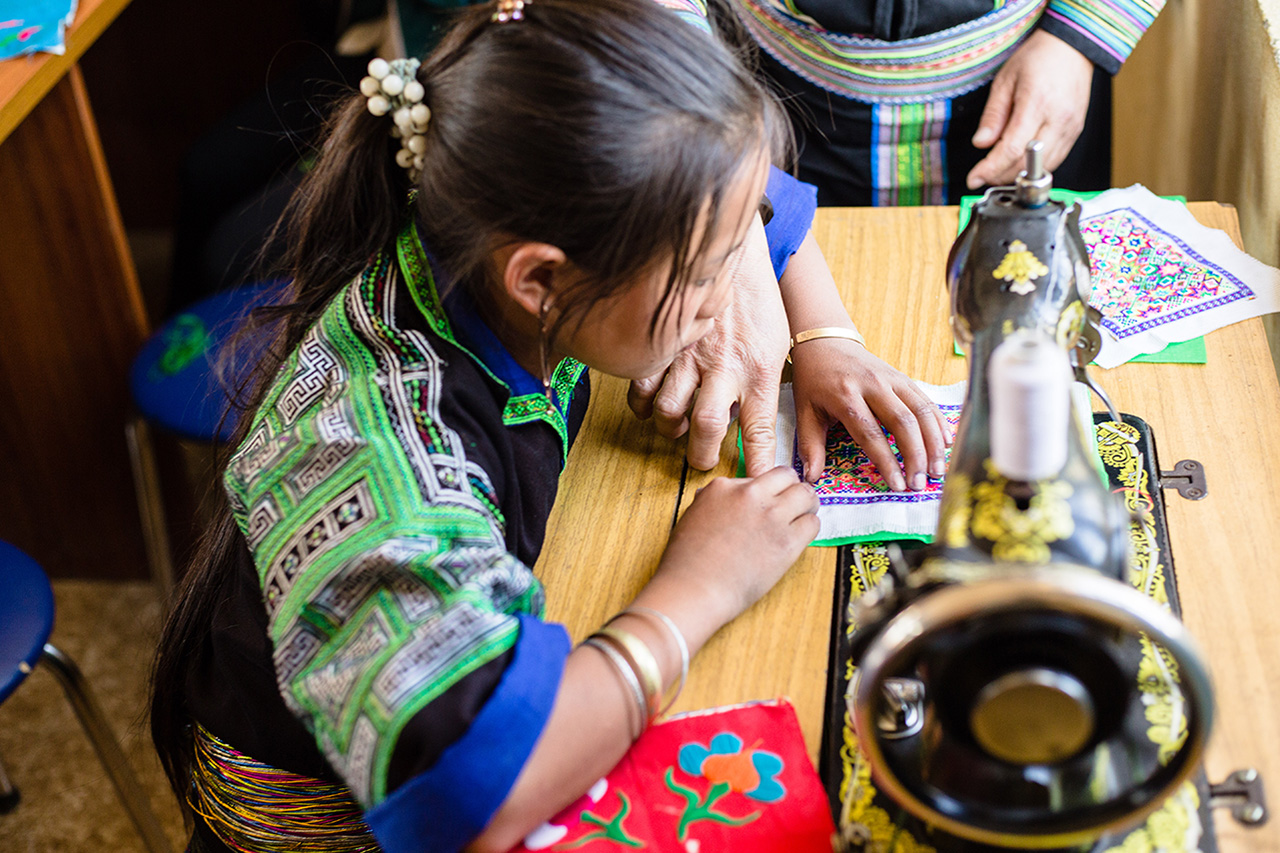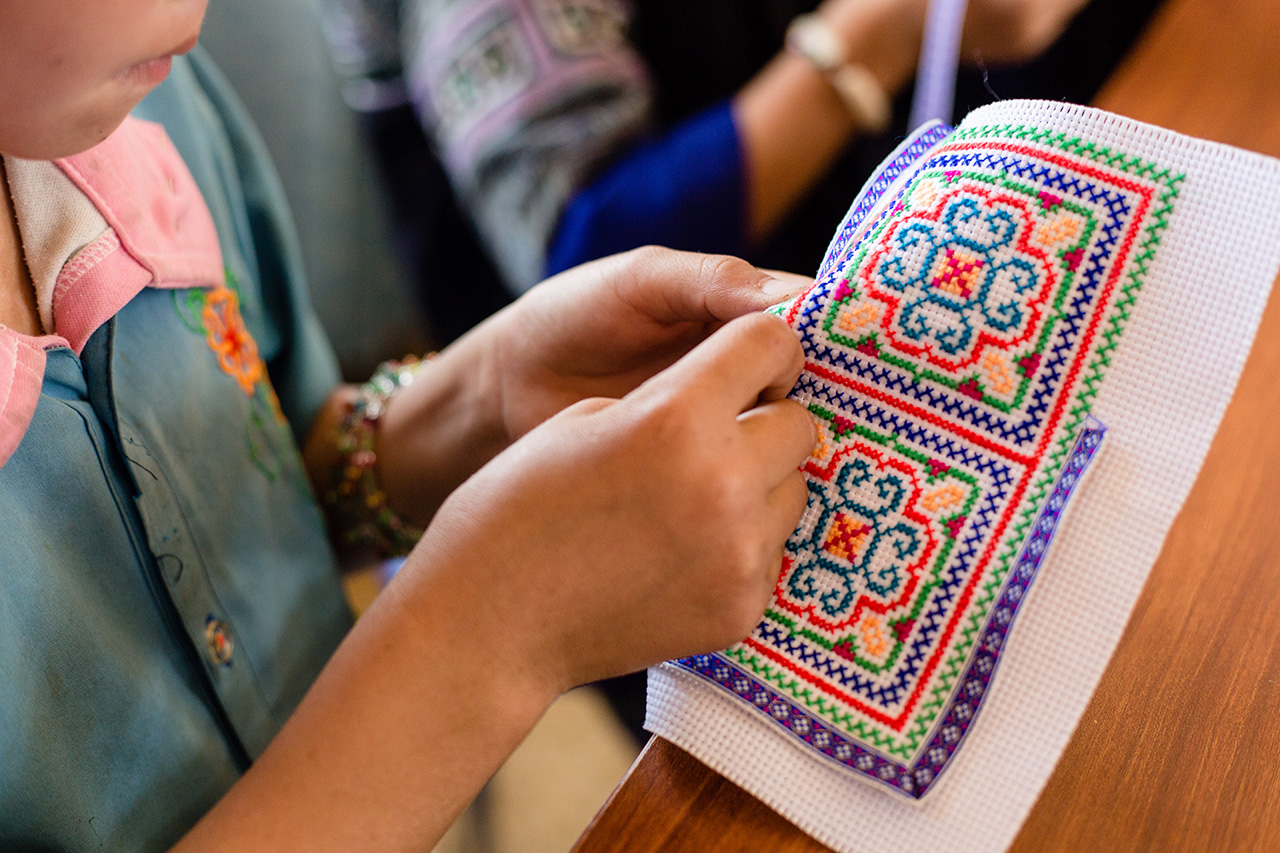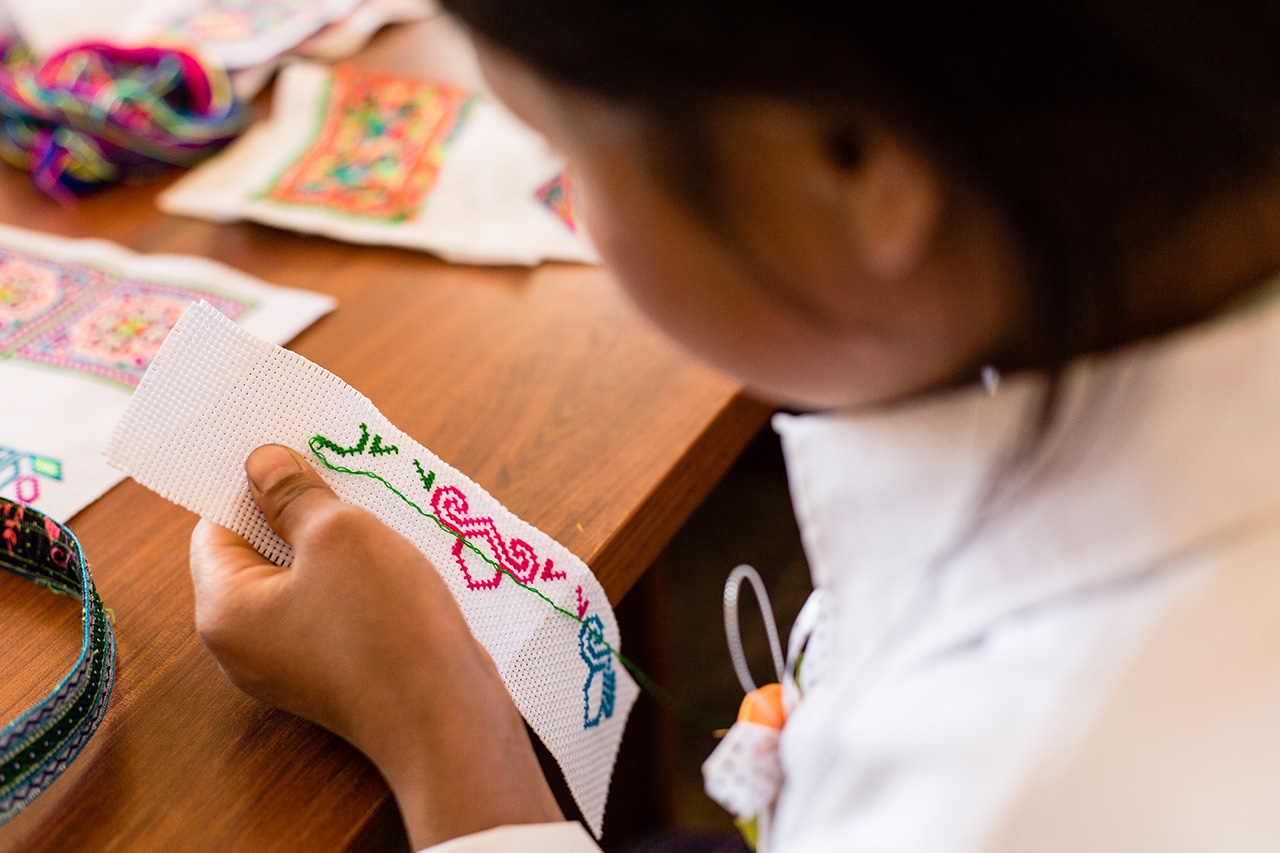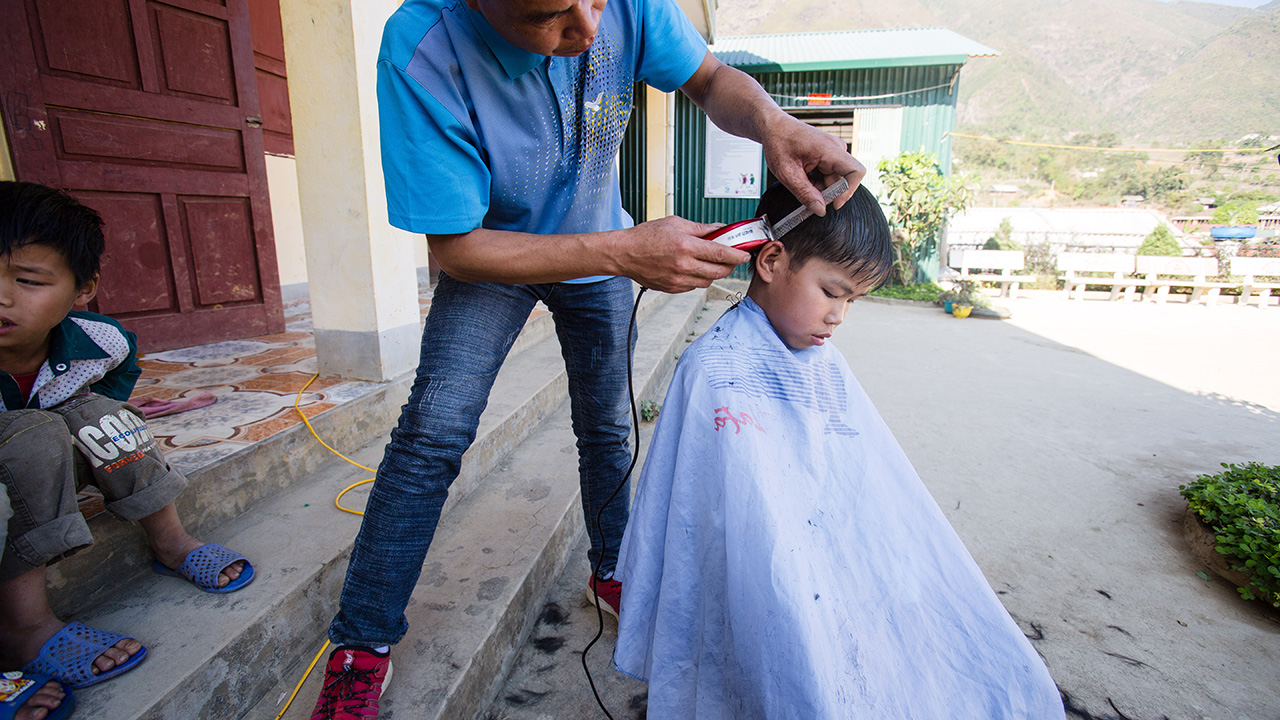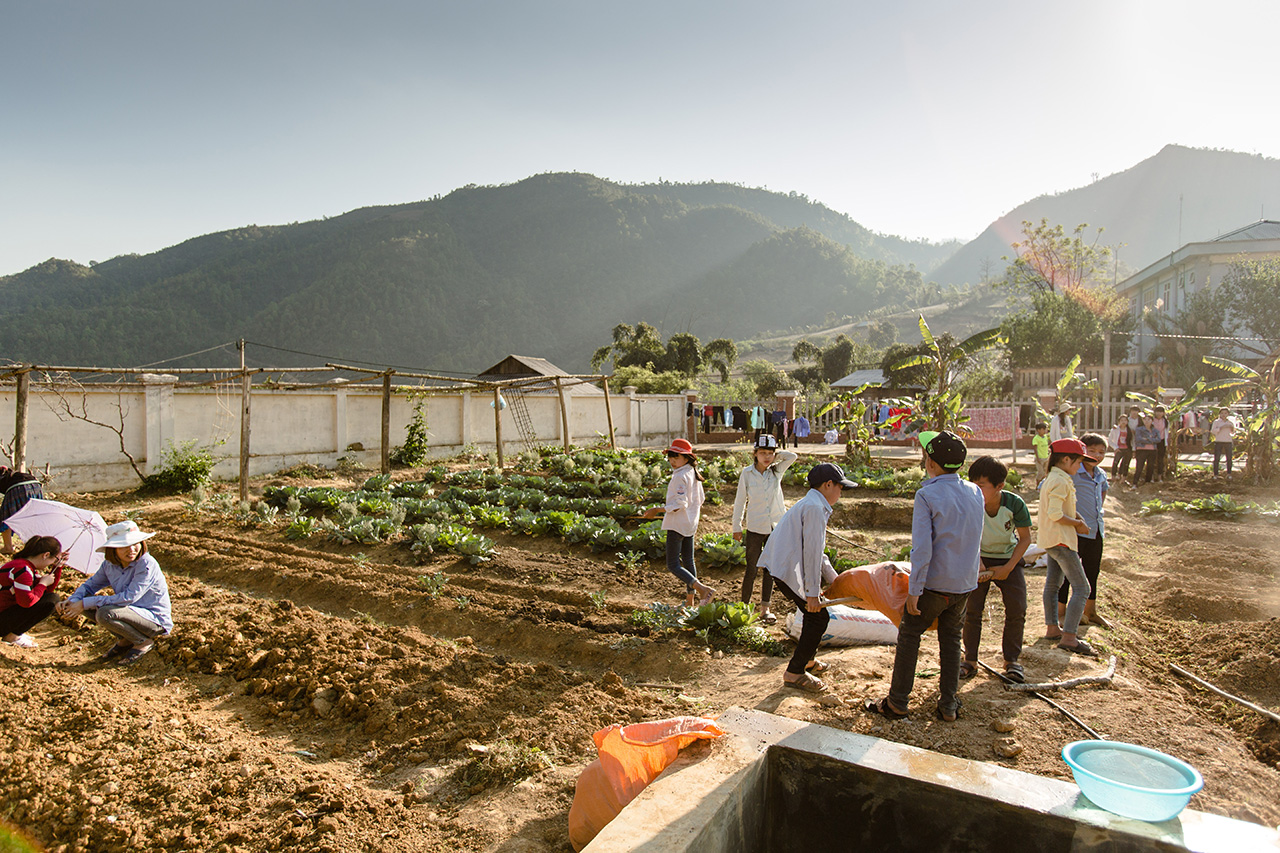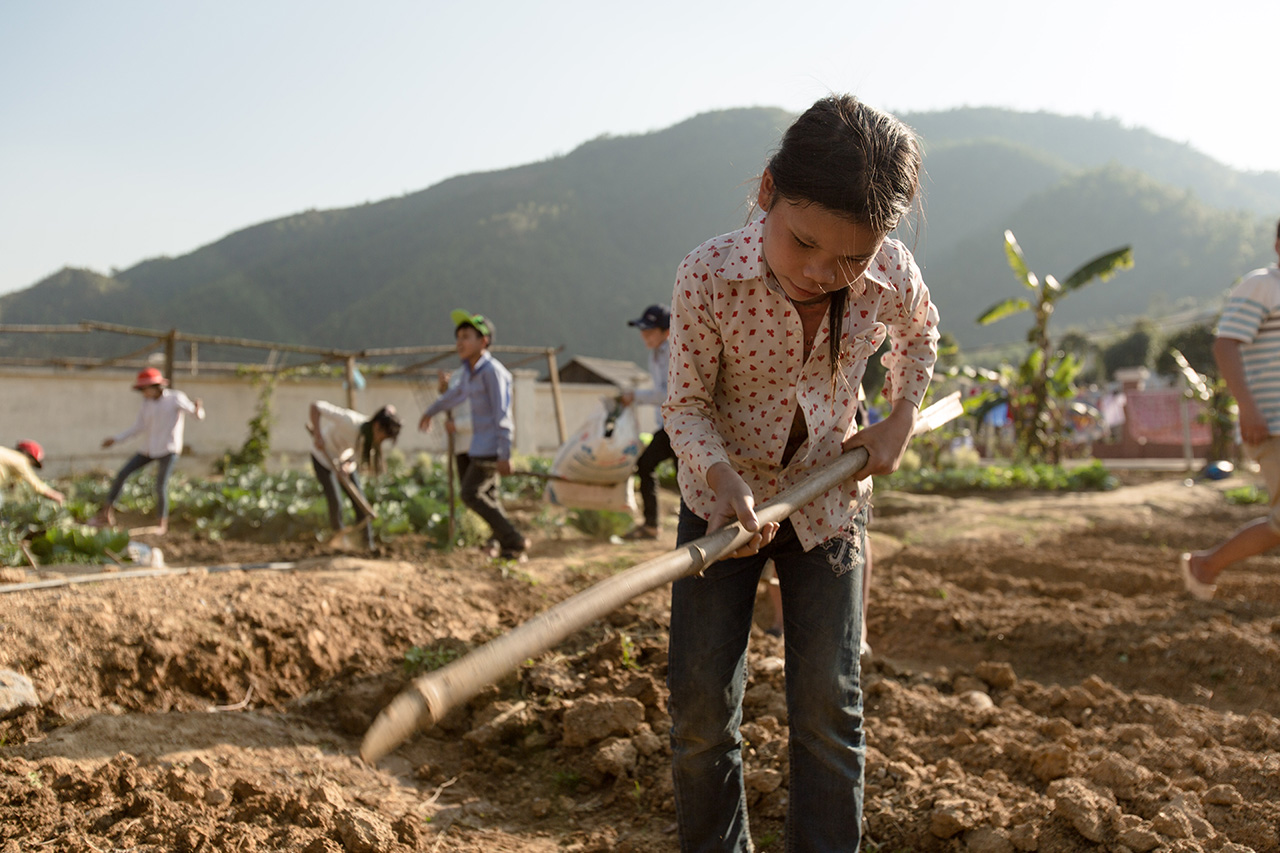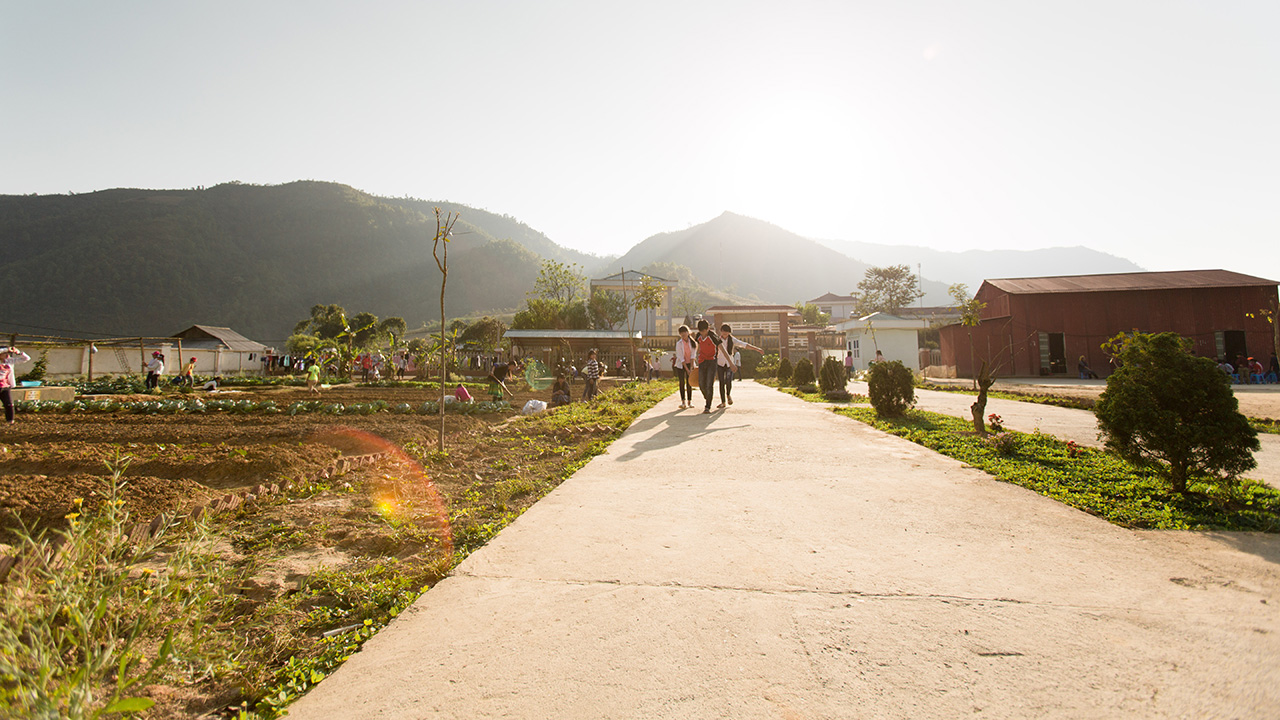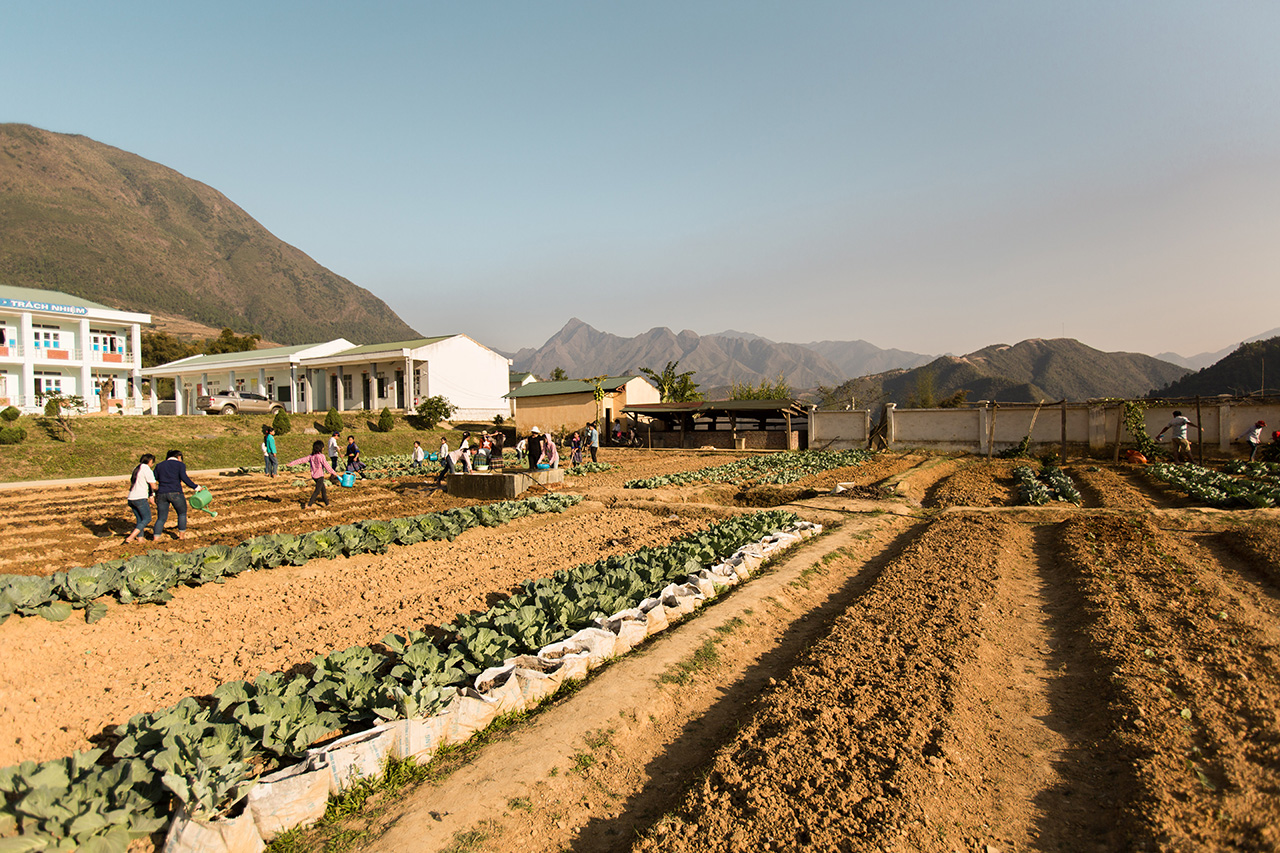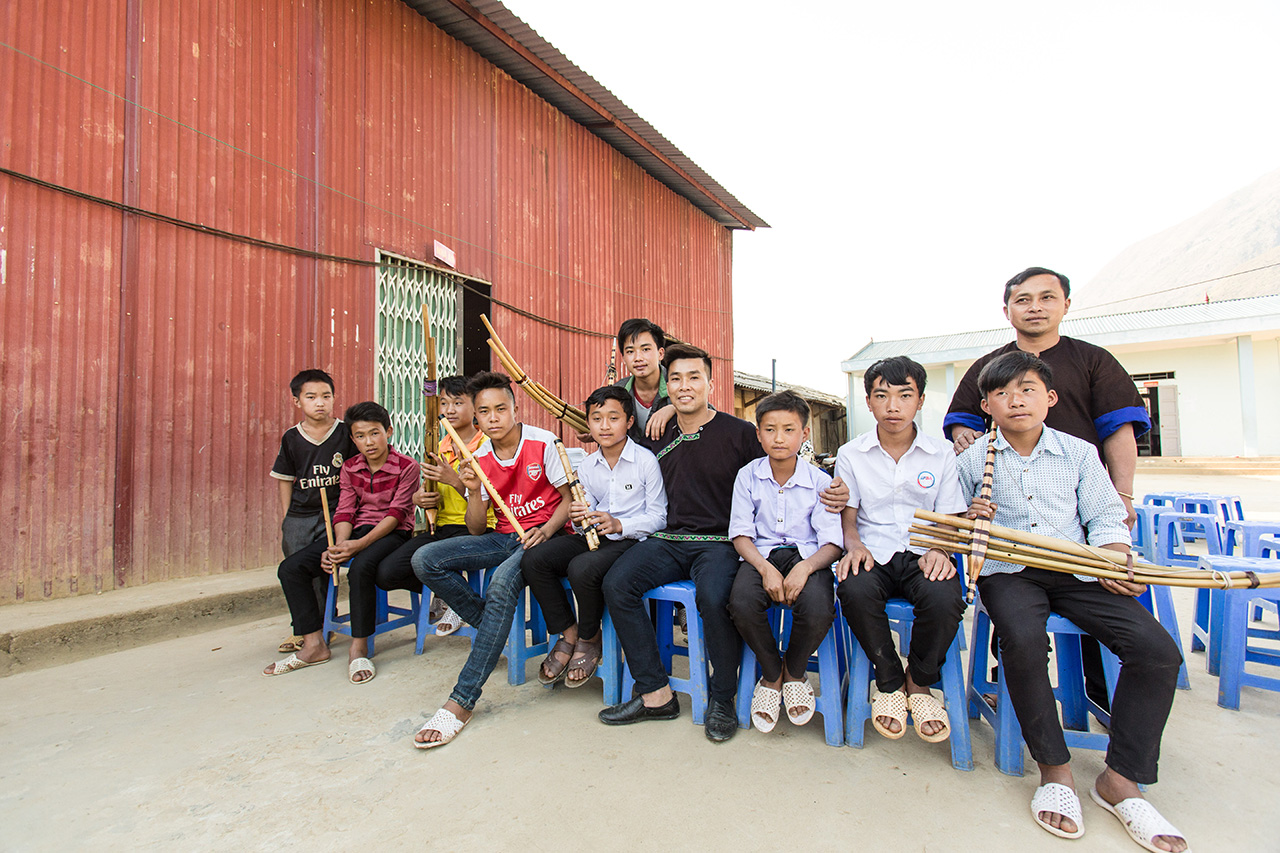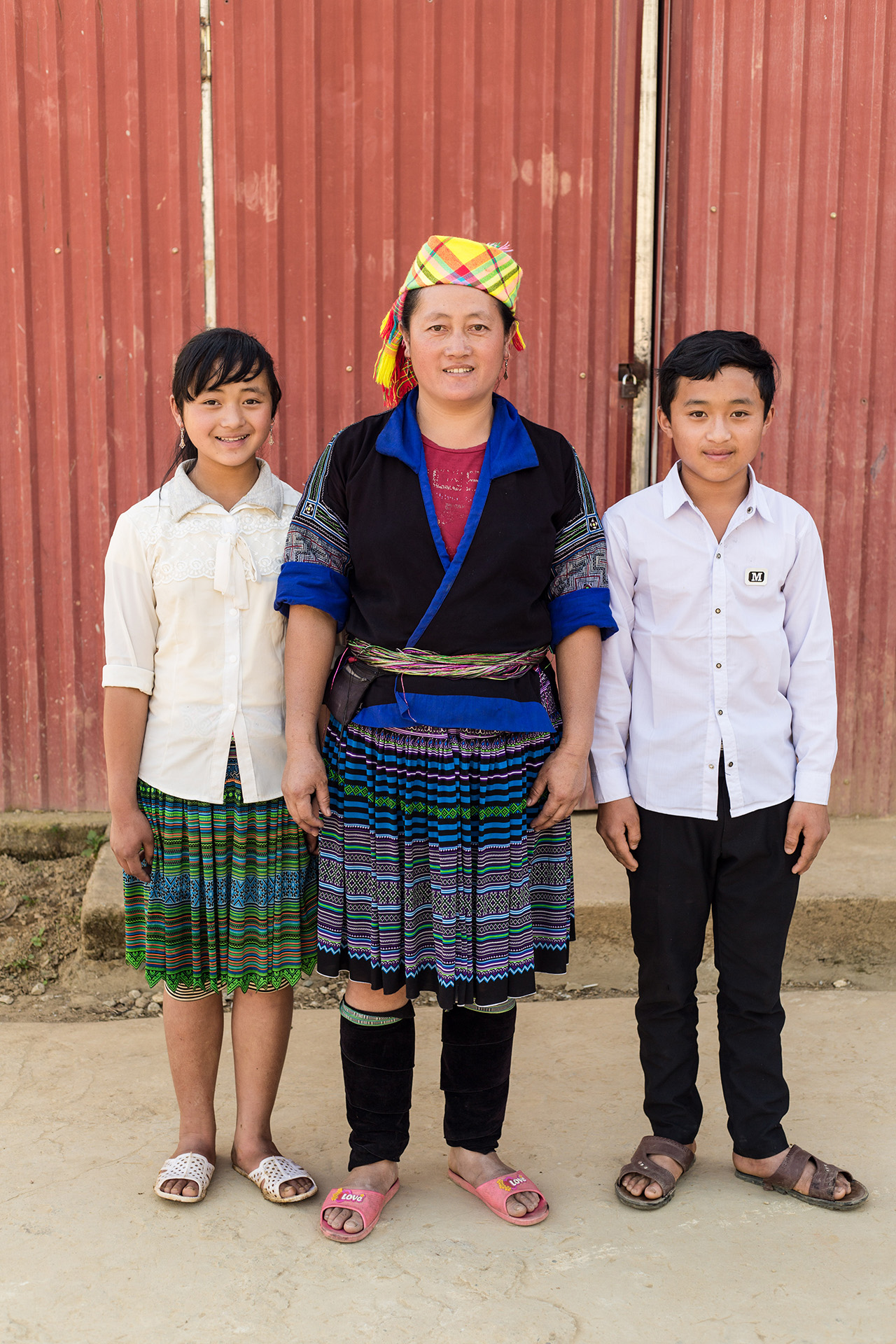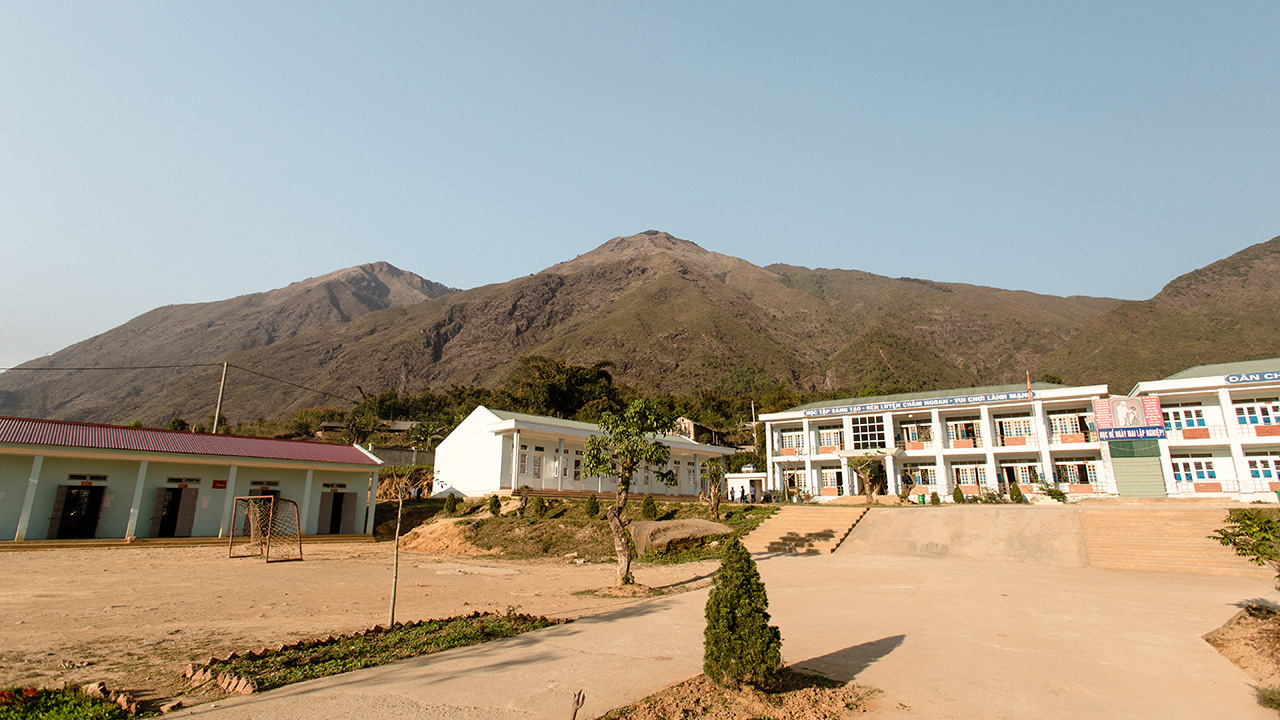Ryan Shanley is a humanitarian photographer who recently visited several CWS programs in Asia. This blog is part of a series of reflections on her trip. Follow Ryan on Instagram @ShanleyStudio or through her website.
On my third day with the Church World Service team in Vietnam, we traveled into the northern Vietnamese hills to visit two schools and learn about the progress of the newly developed children’s interest groups.
We arrived at Ta Mung Ethnic Minority Boarding Primary School first and were greeted by the school’s deputy Headmaster, Ms. Pham Thi Doan, who welcomed us with a smile and warm tea. Ta Mung Ethnic Minority Boarding Primary School is the main school in the village; there are four total. The school has 331 students total, of which, 237 are boarding students. The boarding school exists because many of the students come from villages that are seven or eight miles away from the school and there is no road to drive, only a walking path. The path takes half a day to walk from the school to the villages and is on a slope that isn’t safe to use during rainy season. Ms. Doan spoke about the school, the children, their studies and how to keep the students connected to their culture. She spoke about the new activities in school: hand washing and clean water education, children’s interest groups and training for teacher communication with students.
CWS was there to see the children’s interest group, a program that focuses on embroidery techniques taught to the students by local masters. In this school, the class is taught to 37 girls and three boys, all of whom come from either the Hmong people or the Thai villages. As such, the students are taught by two volunteer women, one woman from the Hmong village and one woman from the Thai village. They educate the children in both Thai and Hmong embroidery practices so they can continue the local culture and contribute their crafts to the local market.
The children are educated in basic embroidery techniques so that they can assemble a small purse or seat cushion. The idea is for the students to learn how to make simple products that can be sold in the market, not difficult costumes. During our visit, the children were learning how to make an embroidered square with four flowers in each corner that would later be sewn onto the top of a seat cushion. The threads were beautiful, vibrant shades of pink, green, blue, purple, yellow and red. The templates feature flowers with petals and stems as well as traditional graphic line patterns. Some patterns are geared towards Thai culture and some towards Muong culture. Students from Thai communities can choose to focus on Thai techniques and those from Hmong villages can choose to focus on Hmong techniques.
In the above photograph, the Thai teacher has attached a piece of fabric to a paper template and sewn a border around the corner. The paper backing creates structure for the students and acts as a template for the flowers they are sewing. The major take away the headmaster learned is that the Muong community and Thai community use different threads from one another; she had simply bought colorful threads. Each community makes their own thread and the colors, thickness and texture is therefore different. Thai thread is usually bigger like a wool yarn and can be used for flocking while the Hmong thread is smaller, smoother, more durable and can be used to make very nice patterns as you see on their traditional dress. In order for the students to understand what an authentic embroidered piece looks and feels like, Ms. Doan plans to buy the correct thread for the next school term. (An aside, I just learned that she purchased new thread last week!) Over time, the students will learn more and more techniques and will ultimately have the skillset to create beautiful crafts as an income generating opportunity while upholding traditional cultural practices.
As a textile enthusiast I was very excited to visit the school and learn more about the children’s interest groups. I have been collecting cactus silk textiles from Morocco, Indigo dyed from woad from Mali and Thailand and traditional garments from Indonesia. I love learning about traditional weaving techniques and dying. Seeing young students learn their local customs and create something beautiful in front of me was an incredible experience. The idea that students are taught traditional embroidery as part of their education so their culture doesn’t disappear is encouraging and honorable. Detailed patterns like the one you see below are most successful and colorful when done by hand. You are able to weave many colors into an intricate space – something that is much harder for a machine. Often machines have to print patterns instead of actually creating a weave. The authenticity and detail that comes with a hand crafted item makes it more precious and these student’s embroidered pieces were no exception.
After we visited the embroidery group we saw the school band where we heard drummers perform. We witnessed the local school boys getting their haircuts by the school barber and we made our way to Ta Mung Ethnic Minority Boarding Lower Secondary School. This school was quite impressive. They had 395 students, of which, 280 students are boarders. As part of their schooling, the students are educated on nutrition and farming practices and they create planting beds, turn soil, plant seeds and grow their own food. The seasonal vegetables from the garden are used to improve the nutrition for the boarding student meals. During our visit, the students were turning over soil and planting new vegetables for the coming months. There was chinese cabbage, eggplant, corn, and much more. A central water reservoir was provided by CWS and was used by the students to fill up buckets and water their plants.
While some students worked on planting new rows of vegetables, other students were learning how to play local instruments with their music teacher, Mr. Hoang Xuan of the Muong ethnic minority group. The students love him and, not surprisingly, he’s a wonderful musician! He teaches the students how to play multiple types of flutes, one being a straight traditional bamboo flute and the other made of bowed bamboo with multiple pipes called a Lusheng flute. The students watch the local master’s play and then practice their technique. Mr. Xuan says,
“The students enjoy the class and it helps them learn about their culture and keep its vibrant history alive. The students don’t get to go home very often so it is important to have a positive and fun learning environment for them. Everyone enjoys music!”
Here is a video of him playing a song for CWS before our departure.
While we were there, a mother was sitting behind the boys learning the flute. She and her husband had traveled a half day, by foot, to visit their two children. She was watching their son learn music, while her husband was watching their daughter learn to farm. Below is Ms. Giang Thi Sia, 37, of the Muong ethnic group, mother to daughter, Mua Thi Lly, 12, and son, Mua A De, 15. She and her husband try to visit their children once a month, when possible.
Our school visits were incredible. The schools are built high in the mountains, but are completely self sufficient. The children have skills that most adults don’t have and they are having fun learning. The schools have a welcoming environment and the students are cared for by their instructors, some of whom volunteer their time for extra programs. The students are not attending school just to learn basic subjects and take tests. They are learning life skills, skills that will help them get jobs, create income for themselves all while celebrating their community and culture. Their parents take pride in their children’s achievements while living and learning in the Ta Mung Ethnic Minority Boarding schools. It was a special experience, and I’m grateful to have had a glimpse into the students’ activities and way of life.

